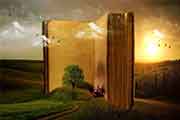2020年6月大学英语六级阅读晨读美文:Plants in the Deserts
【文章简介】咱们都是有胡想殊不知道怎样辛勤劳动贡献的纠结体,是一个需要他人帮忙规划人生的稚子派。华宇考试网为您提供了“2020年6月大学英语六级阅读晨读美文:Plants in the Deserts”,接待阅读参考!更多有关讯息请关注华宇考试网!

Some cacti, like the saguaro, grow to tree size, but true trees need more moisture than most desert environments can supply, so they are scarce on deserts. Close to streambeds, cottonwoods can sometimes be found. Though these streams are dry most of the year, water flows there longest and is usually available fairly close to the surface. Elsewhere, trees must send taproots deep into the hard baked desert soil to draw on underground water. Perhaps the most widespread family of trees on the world's deserts is the acacia, whose taproots drill down as far as 25 feet (7. 5 meters). The mesquite co妹妹on on North American deserts in both tree and shrub forms, does not begin to grow above ground until its root system is completely developed, ensuring the plant a supply of moisture. The roots of shrubs and trees help to hold the desert soil in place. Their stalks and branches also act as screens to keep the wind from sweeping great drifts of sand along the surface. These services are vital if a desert is to support life. Scientists estimate that a desert needs year round plant cover over 20 to 40 percent of its surface. If shrubs are too far apart - separated by a distance greater than five times their height - soil around them is likely to blow away. Without the shelter of established shrubs, new seedlings will have difficulty in getting a start. On the other hand, plants that are too close together may compete for underground moisture. To protect themselves from this competition some shrubs give off a substance that kills young plants that sprout too close to them. In addition to a few varieties of trees and tough shrubs, most deserts have grasses, herbs, and other annual plants. These do not compete for moisture with the longer lived growth. They spring up quickly after rains, when the surface is moist. Then, for a brief time, the desert can be literally carpeted with color. Almost as quickly as they appeared, these small plants die away. But they have developed special ways of ensuring the life of another generation when rains come again.
